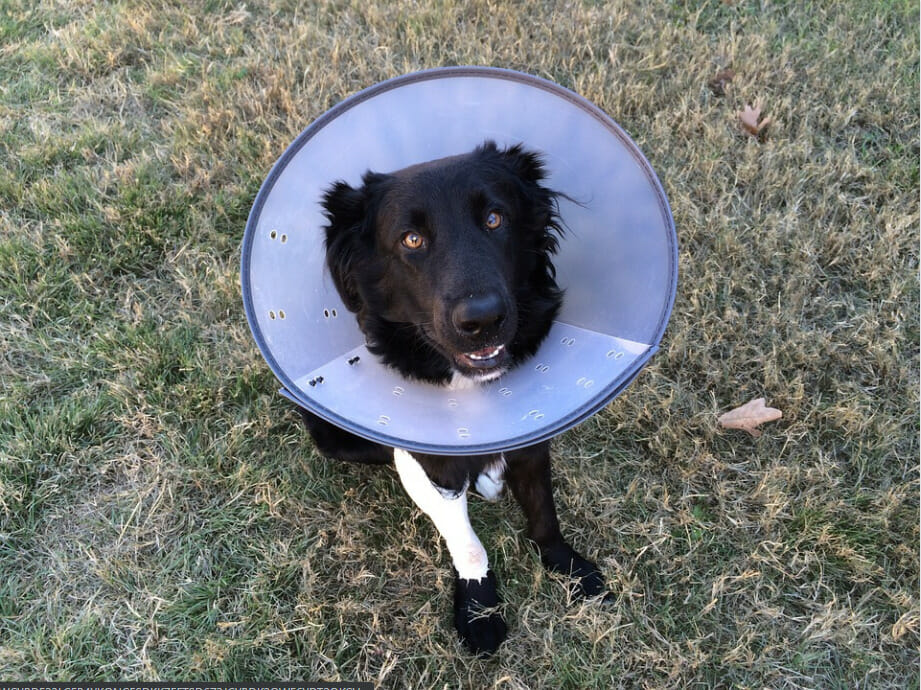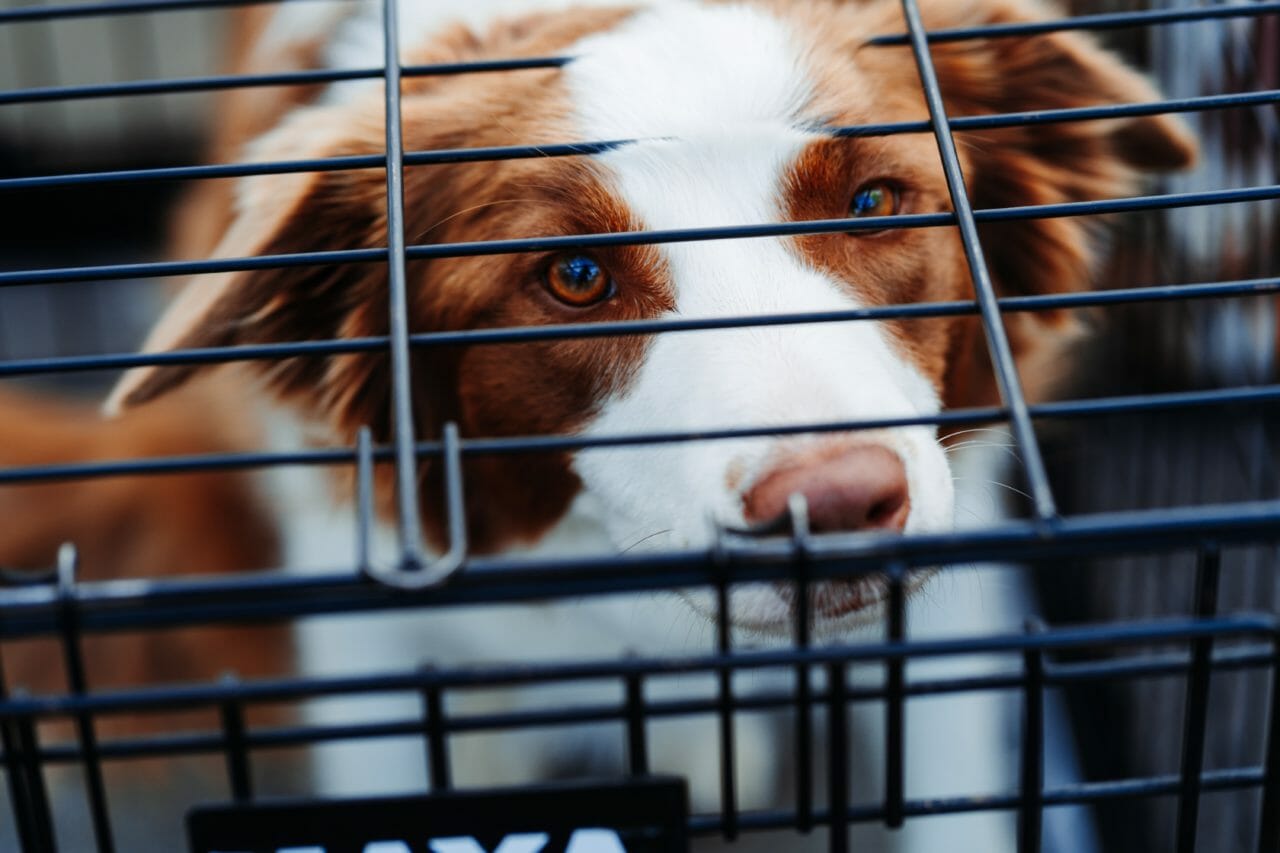A serious condition that isn’t a cause for panic
If you’re a dog owner, you should be aware of the signs that your dog may have a fractured sacroiliac joint. This condition is relatively common in dogs and can often be treated with surgery.
An important part of a dog’s ability to use their back legs, damaging this part of a dog’s body can be devastating to their short-term and long-term health. In this blog post, RehabPet.com will discuss:
- What the sacroiliac joint is
- What the signs are that your dog has a fracture
- What the surgery process is like
- What it costs
- How the recovery process progresses
We hope this information will help you make an informed decision on your dog’s health and how to identify if they have this condition.
What Is the Sacroiliac Joint in Dogs?
The sacroiliac (SI) joint is the connection between the sacrum, the triangular-shaped bone at the base of the spine, and each ilium, which is one of two large bones that make up your dog’s pelvis.
The SI joint facilitates slight movement between these bones to allow for everyday mobility. Several ligaments and muscles hold the SI joint together, which helps to stabilize the joint.
What Happens When the SI Joint Becomes Damaged?
When the SI joint is damaged, it can be painful and make it difficult for your dog to move around.
A sacroiliac fracture is a break in one or more bones that make up the SI joint. This type of injury is most commonly seen in dogs involved in blunt trauma accidents like being hit by a car. However, it can also be caused by repetitive stress on the SI joint, such as jumping off high surfaces.
Signs That Your Dog May Have a Fractured Sacroiliac Joint
It will be quite obvious if there has been a fracture in your dog’s sacroiliac joint.
These signs will include:
- Lameness in the back leg or legs
- Not wanting to put any weight on the affected area
- Holding their tail lower than average or to the side
- Reluctant to move or jump
- May cry out in pain when you try to touch the area around their SI joint.
If your dog has suffered a sacroiliac fracture, seek veterinary attention as soon as possible. Left untreated, a sacroiliac fracture can lead to complications such as permanent lameness and chronic pain.
How Much Does It Cost to Treat a Fractured Sacroiliac Joint?
The cost of treating a sacroiliac fracture will vary depending on the severity of the injury and the treatment that your veterinarian recommends.
If your dog has a mild sacroiliac fracture, it may be able to be treated with:
- Pain medication
- Rest. However
More severe fractures will require surgery to repair the break, which can be quite costly.
The average cost of sacroiliac surgery is between $2000 and $4000, depending on the veterinarian and the region you live in.
How Do Vets Diagnose a Fractured Sacroiliac Joint?
If your vet suspects that your dog has a sacroiliac fracture, they will first perform a physical examination. This will involve feeling around the SI joint to check for pain and swelling. They will also assess your dog’s mobility and range of motion.
Your vet may also recommend one or more of the following diagnostic tests:
Radiographs (X-rays)
Radiographs will show if there is a break in the bones that make up the SI joint. Multiple views may be necessary to get a clear picture in some cases.
Computed Tomography (CT) Scan
A CT scan is a particular type of X-ray that produces cross-sectional images of the body. This can help diagnose a sacroiliac fracture because it takes faster pictures than x-rays to create more detailed photos.
Magnetic Resonance Imaging (MRI)
An MRI uses magnetic fields and radio waves to produce detailed body images. For example, viewing a sacroiliac fracture is easier using an MRI because it can show the location and severity of the break, as well as any damage to the surrounding ligaments and muscles that a CT scan cannot detail.
Once a sacroiliac fracture is diagnosed, your vet will develop a treatment plan.
Treatment for a Sacroiliac Fracture
The goal of treatment for a sacroiliac fracture is to provide pain relief and allow your dog to heal correctly. In most cases, this will involve surgery to stabilize the SI joint.
The type of surgery your dog will need depends on the location and severity of the fracture. Sometimes, a minimally invasive procedure can be performed using pins and screws to stabilize the fracture. However, open surgery may be necessary in more severe cases to repair the fracture.
After surgery, your dog will need to stay in the hospital for several days to be monitored closely. They will likely need to take pain medication and may need to wear a cone to prevent them from licking or biting at their incision.
The Recovery Process for a Fractured Sacroiliac Joint
Once your dog has had surgery to repair their sacroiliac fracture, they will need to take it easy for several weeks while they heal. This means no running, jumping, or playing.
Your vet will likely recommend that you give your dog short leash walks several times a day to avoid getting too stiff. Physical therapy can also help your dog regain strength and mobility in the affected leg.
As your dog heals, the joint will slowly start to feel better and your pup will be able to do more. But to facilitate the healing process, it’s important to follow your vet’s instructions and avoid doing too much too soon.
A proper diet is also vital for your dog’s recovery. Your vet may recommend a special joint supplement or diet to help support your dog’s joints as they heal.
Closing Thoughts
If your dog has a sacroiliac fracture, it’s essential to follow your vet’s instructions and give your pup the time they need to recover. With proper treatment, most dogs fully recover and can return to their normal activities.



